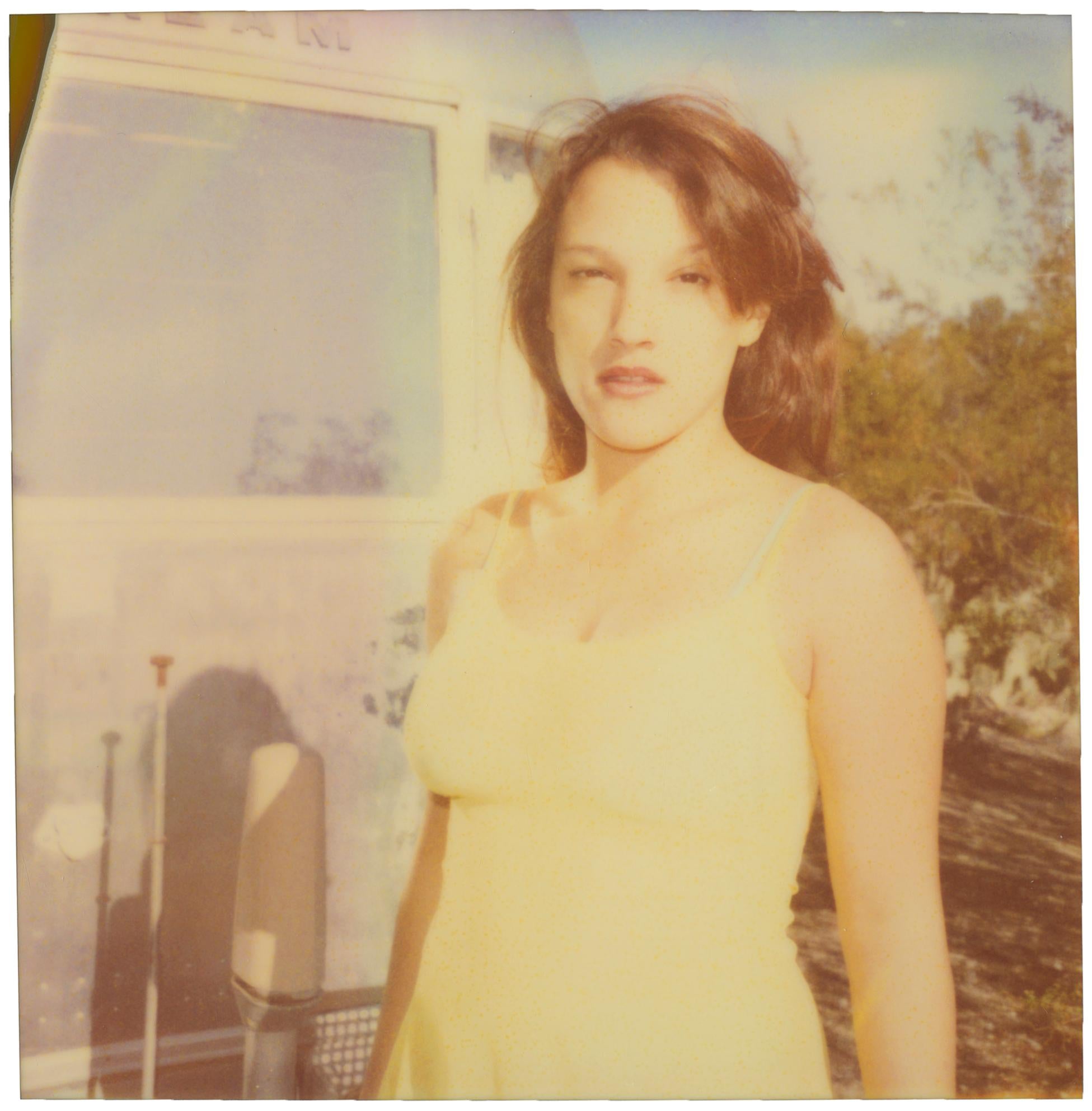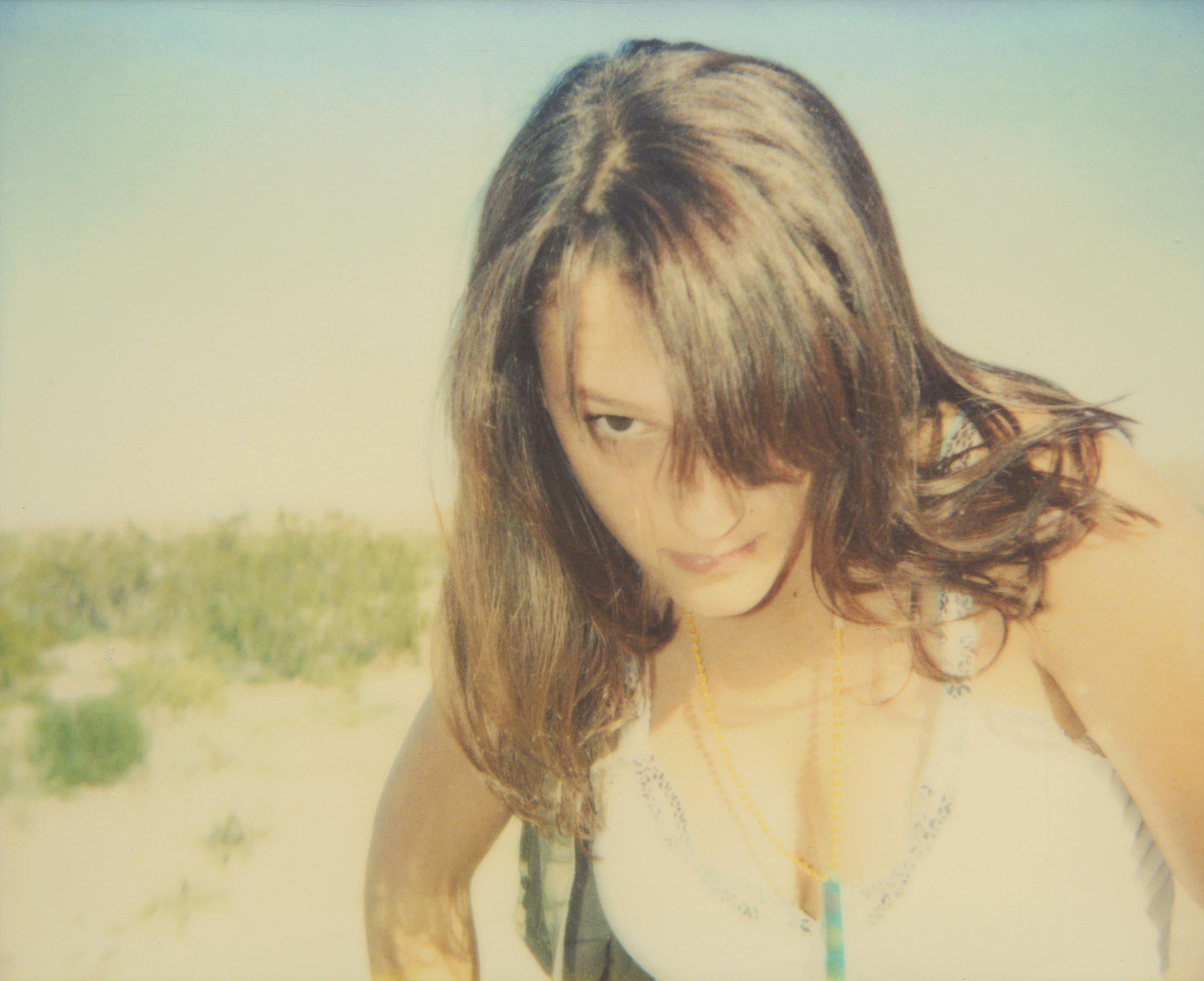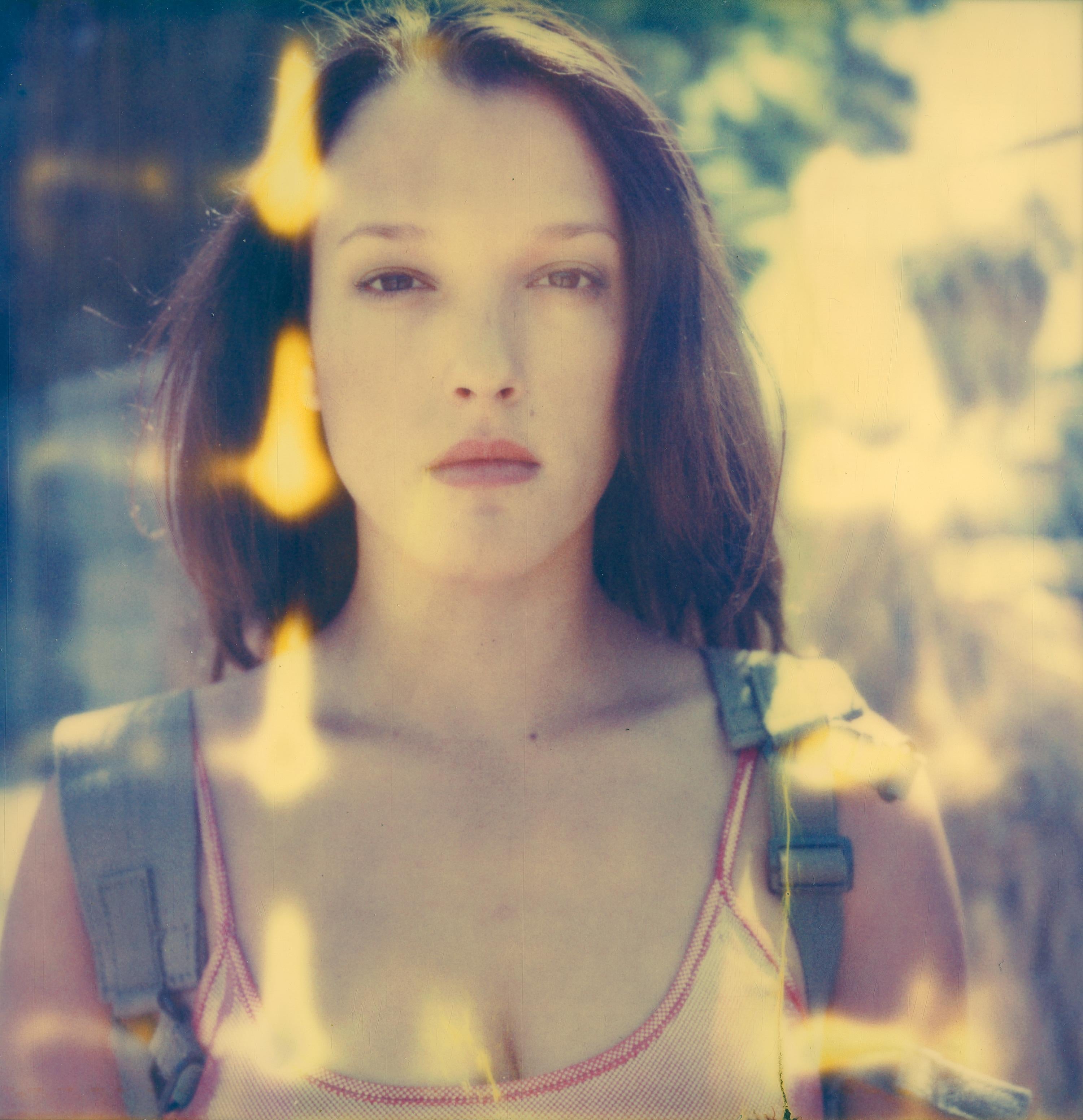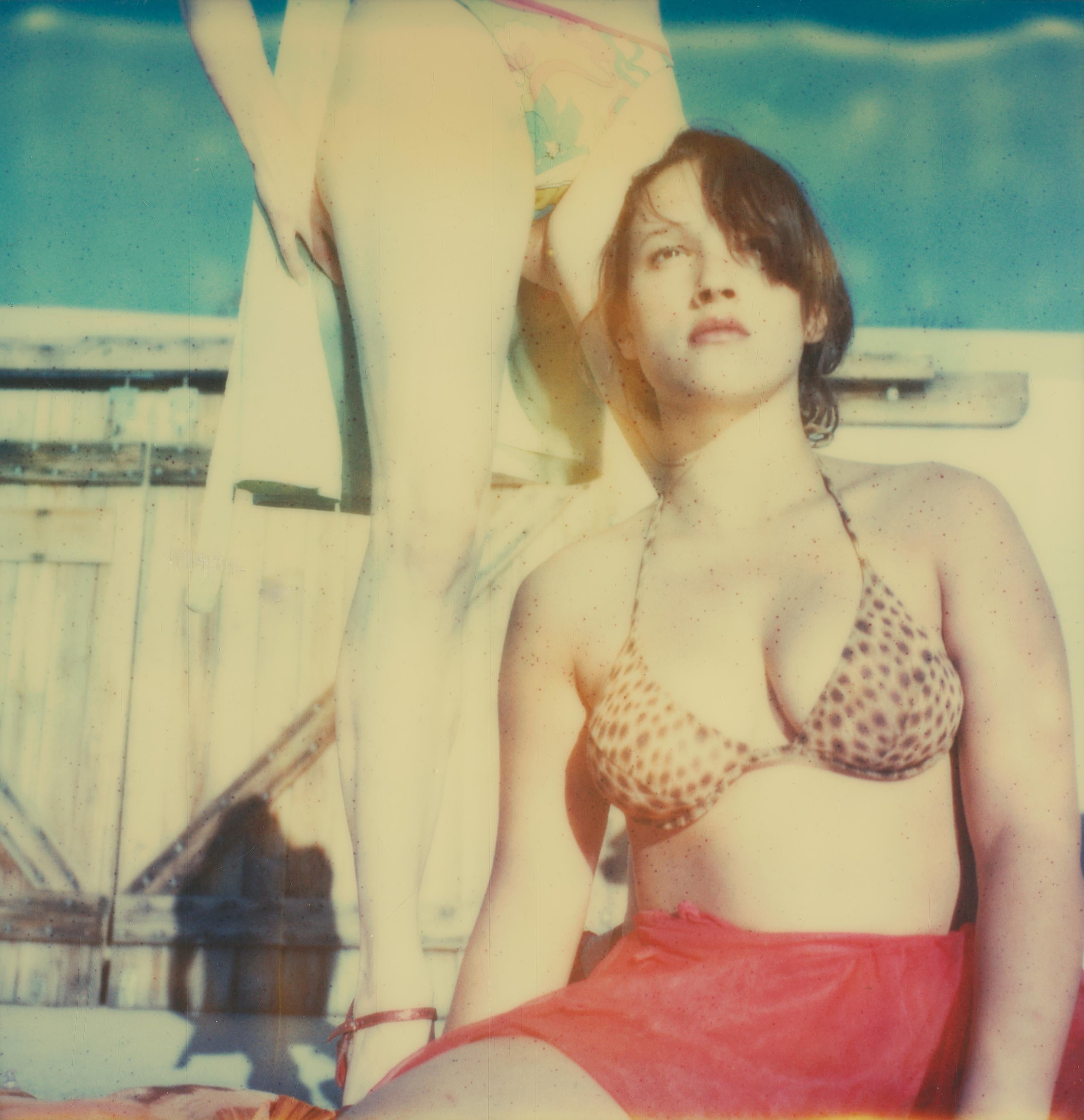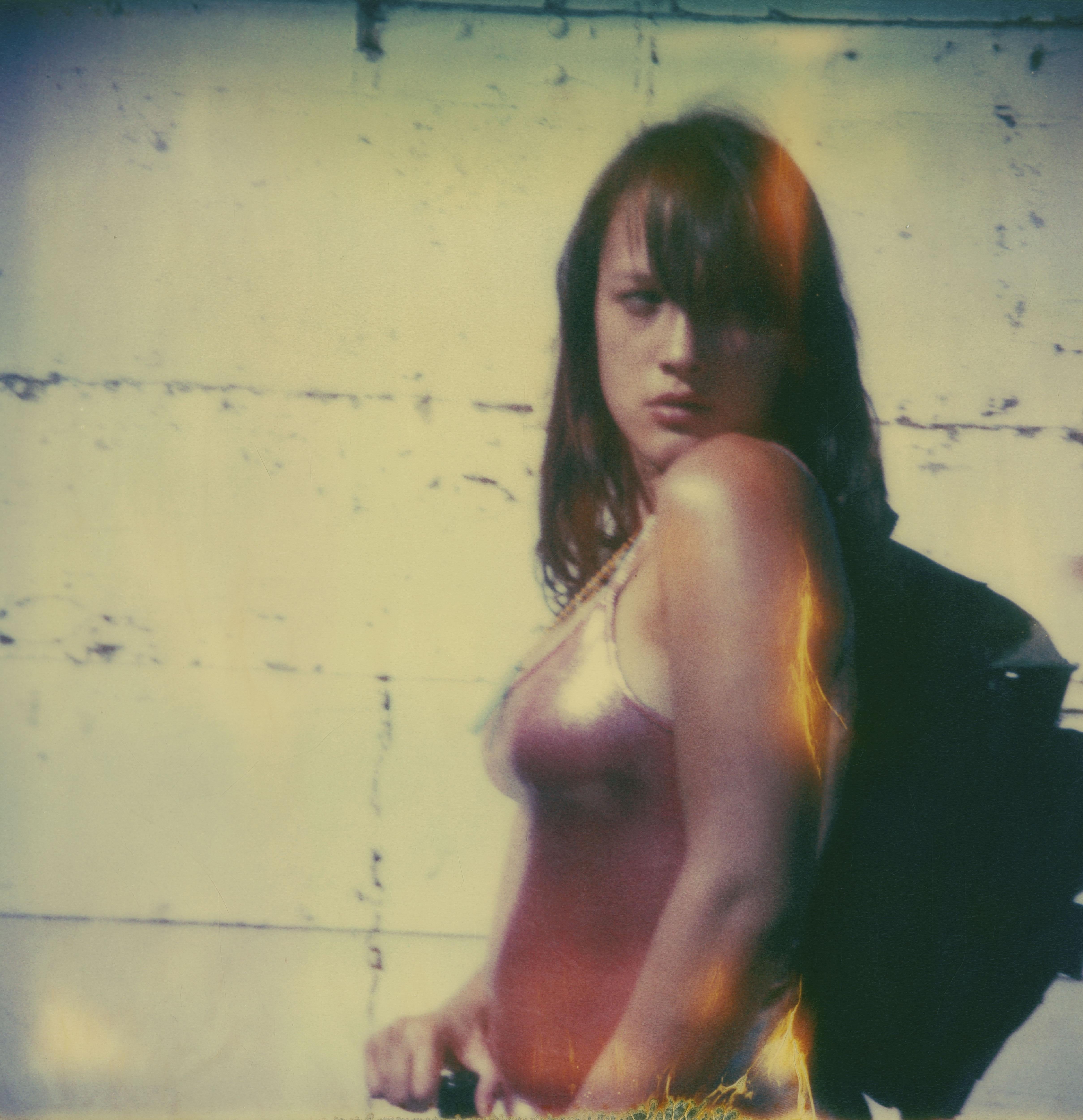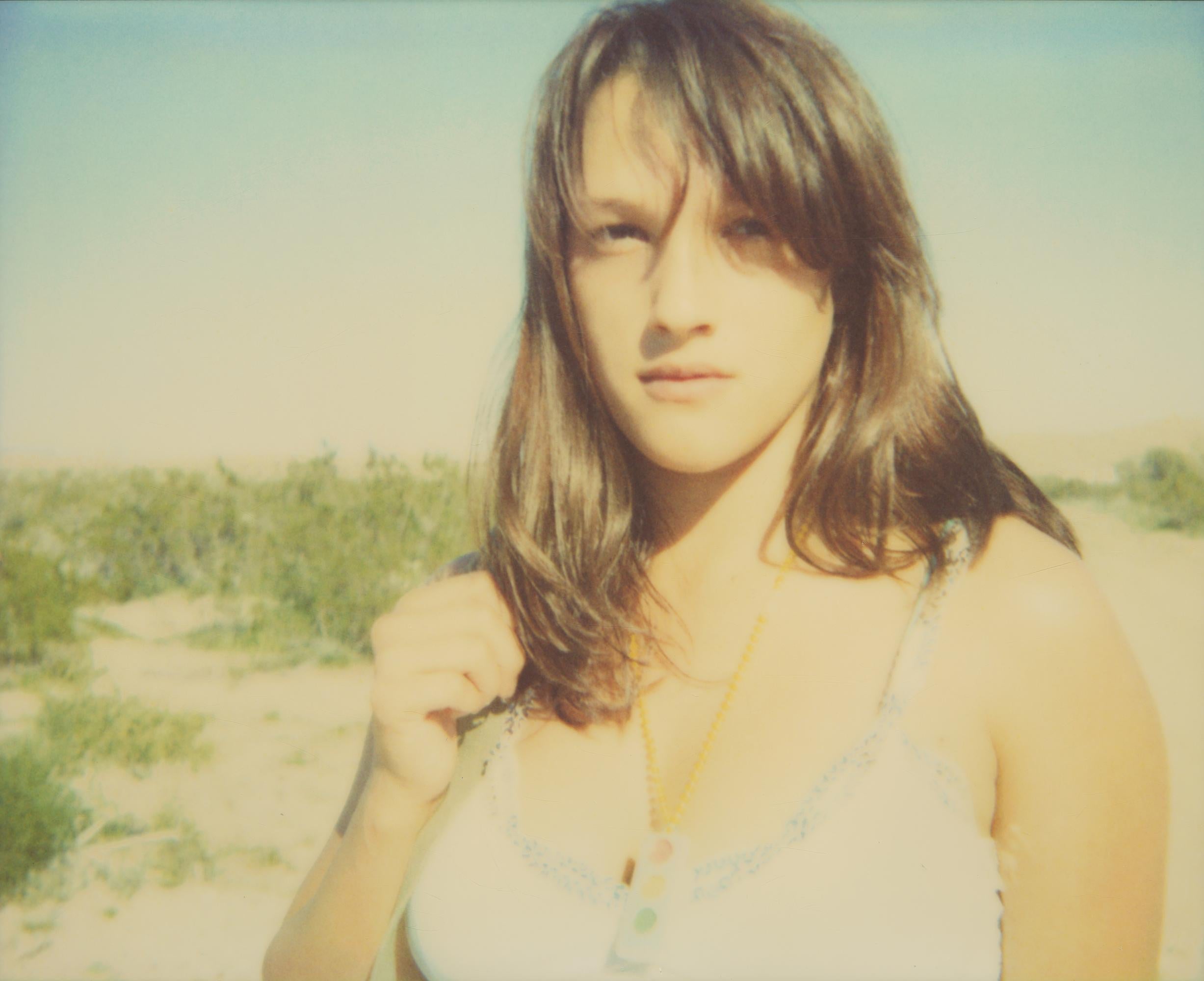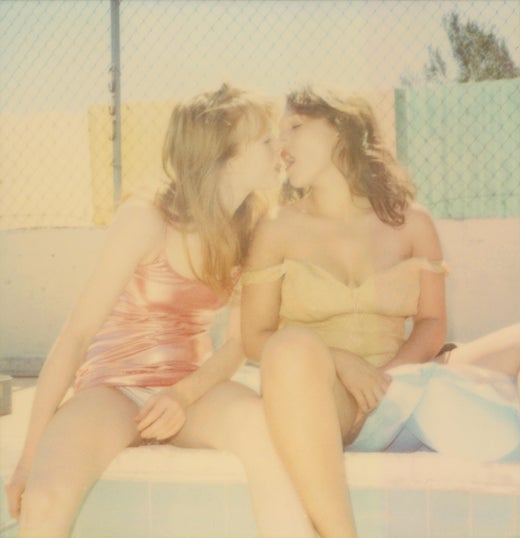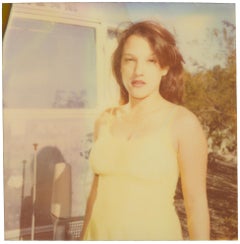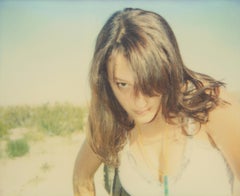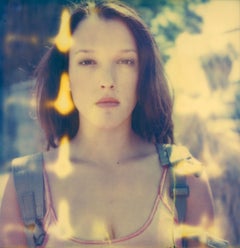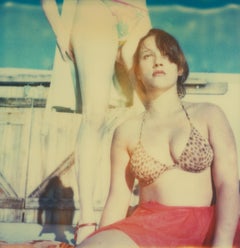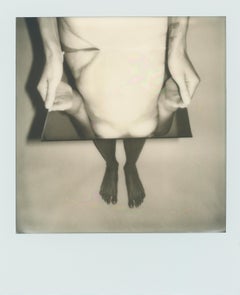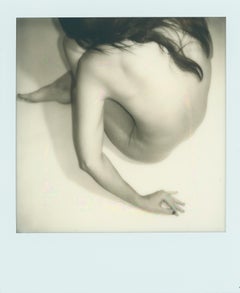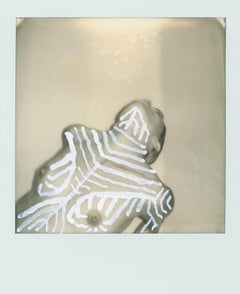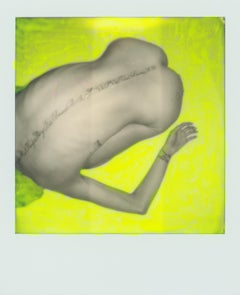Items Similar to A Mirage (Till Death do us Part) - Contemporary, Polaroid, Women
Want more images or videos?
Request additional images or videos from the seller
1 of 2
Stefanie SchneiderA Mirage (Till Death do us Part) - Contemporary, Polaroid, Women2005
2005
$380
£288.64
€332.61
CA$535.13
A$593.28
CHF 311.79
MX$7,260.72
NOK 3,893.93
SEK 3,654.84
DKK 2,482.74
About the Item
A Mirage (Till Death do us Part) - 2005,
20x20cm,
Edition of 10,
Archival C-Print print, based on the Polaroid.
Certificate and Signature label, artist Inventory No. 9044.
Not mounted.
on offer is a piece from the movie "Till Death do us Part"
Stefanie Schneider’s Till Death Do Us Part
This selective aspect of the work is an expansion of idea of the act of photography in which the artistic photographer selects that which is already there, and then, by distortion, definition or delimitation, compositional and lighting emphasis, and by a host of other techniques, subsumes that which is already there to transform it into an image of the artist’s contrivance, one that is no less of the artist’s making than a work in any other medium, but which is distinct from many traditional media (such as painting) in that it retains an evocation of the tension between what is already there and what is of the artist’s making. Should it fail to achieve this, it remains, to that degree, mere illustration to which aesthetic technique has been applied with greater or lesser skill.
The way Til Death Do Us Part expands this basic principle of the photographic act, is to apply it to further existing elements, and, similarly, to transform them. These additional existing elements include written or improvised pieces narrated by their authors in a way that shifts between their own identities and the identities of fictional characters. Such characters derive partially from their own identities by making use of real or imagined memories, dreams, fears of the future, genuine impressions, and emotional responses to unexpected or even banal events. There is also music, with voice and instrumental accompaniment. The music slips between integration with the narrative voices and disjunction, between consistency and tension. At times it would direct the mood, and at other times it would disrupt.
Despite that much of this material is made by others, it becomes, like the reality that is the raw material of an art photo, subsumed and transformed by the overall aesthetic act of the manner of its selection, distortion, organization, duration, and emotional effect.
* * *
David Lean was fond of saying that a love story is most effective in a squalid visual environment. In Til Death Do Us Part, the squalor of the American desert violated by the detritus of consumerism, cheap construction, and its unrelenting light, is so extreme that advertising clips have elevated it to an iconographic status that has become a convention.
But unlike the boast of advertising’s scrupulous control of the image in the service of a product, Stefanie Schneider’s work repudiates such control by means of an intentional imposition of accident. Since her source images derive from a degraded Polaroid film stock long past its expiration date—these images are then reprocessed and enlarged on analog equipment—the presence of the distortions in the images are intended by the artist who chooses the stock precisely for its capacity to distort, but the nature of the distortions, within the range of what the film stock in operation by the artist can generate, remain accidental and only visible to the artist for selection after the fact.
Besides that such images evoke a tension between accident and control that is alien to commercial images that must be controlled due to the contractual nature of their origins and aims, it is a fact that the way accident underlies these images, does not derive from “what is already there” in, the conventional sense that photographs are constrained by the way they necessarily capture existing reality external to the artist’s contrivance. Here the accident is in the intrinsic process: it is chemical, physical, mechanical, and concealed from the artist’s view, as much as the artist does contrive the conditions for it to occur. In this sense, it perverts this traditional limitation of photography as an artistic medium by exaggerating it to an extreme degree. It transfers the lack of an artist’s contrivance, from the a priori nature of that which is photographed, to a chaotic element in the mechanico-chemical process of reproduction.
This intentional imposition of accident reveals a marked precedent in the Abstract Expressionist painting of the mid-20th Century. The great figures of Abstract Expressionism all devised a way of applying pigment by means of a technique that incorporated a degree of accident into the process. It is this theoretical feature derived from practice that most effectively unites their work its conceptual aspect, despite the overt formal dissimilarity between the works. Pollock dripped and flung pigment, but mostly did not actually touch his brush to the canvas; de Kooning squeezed pigment onto the canvas directly from the tube, and scraped it behind the blade of a putty knife where its application was concealed from his own view; Frankenthaler would bleed thinned paint onto an unprimed canvas whereby the precise form and extension of the interaction would be self-generated; and Bacon, in another world across the Atlantic, differed from Soutine not as much in form as in technique: he would not paint his distortions directly with a brush, but would smudge them with a rag or sponge so that the result was invisible until after the fact.
The Minimalists who followed, rejected this sort of work as too “gestural,” too “representational,” and too “personal,” but, all too often they ignored or underestimated the power of the tension to be derived from this conceptual dimension of the work in its simultaneous accommodation of intention and accident—which, in either case they would have regarded as inimical to the absolute control they often fetishized as an alternative to traditional emotion.
But it is precisely this intentional imposition of accident that Stefanie Schneider introduces to the photographic medium in the intrinsic manner of its rendering. In this sense, her work is radically distinct from a photography that is thoroughly “staged,” or merely altered after the fact, or “manipulated” in the reproduction process, or degraded on its surface, or for that matter which luckily captures an accidental event. Her work reveals a marked theoretical kinship with the work of painters of the forties and fifties, by appropriating or “selecting” their most pertinent conceptual innovation and adapting it for the photographic medium by devising a practical means to incorporate it in a medium that is itself mechanically and chemically mediated.
Here, the desert in all its squalor, is neither entirely real, nor “hyper-real,” but a fictive environment generated by the artist’s contrivance through the imposition of accident upon the process of photographic representation.
Stefanie Schneider’s desert is no more literally real than is the absence of any intrusion of the external world in Till Death Do Us Part. The characters seem to have no past or future apart from the immediate—one could say in this regard, hellish— all-present of their exclusive relationship, and the narrated allusions to events that may or may not be real in the imaginary plane the characters inhabit. Within the world of this visual and narrated fiction, there exists for them no opportunity for interaction with anyone but each other, either in person, or by electronic means.
Instead, the artist selects all aspects of their condition, even though constituents of the totality of their condition may originate with the actors themselves. Similarly, the artist isolates them from all elements elements that would fall outside the exclusive domain of their relationship.
In this sense, Till Death Do Us Part is not reality, but more than reality’s depiction can achieve through conventional means, it conveys a real sense of what it is like to be a protagonist of such a relationship, to be prey to the strange delusions that so often occur as part of the relationship’s intrinsic condition, the sense that, for the lovers, only they themselves exist, and they exist only for themselves and for each other.
The fact that both lovers are women, on the one hand, underscores this exclusivity, and renders them more keenly and apparently reflections of each other. On the other hand, it implies a degree of overt harmony in the work’s formal aspect that itself generates an aesthetic counterpoint to the tension between intention and accident in the work’s conceptual aspect.
The effaced death that ends the work reaffirms the sense of oscillation between reality and fantasy that permeates the work. In the end, it is as though the totality of both character’s passions were subsumed by the desert, the stage upon which the artist enacts every mental state she conjures.
----------------
Stefanie Schneider lives and works in the California High Desert where her scintillating situations take place in the American West. Situated on the verge of an elusive super-reality, her photographic sequences provide the ambience for loosely woven story lines and a cast of phantasmic characters.
Schneider works with the chemical mutations of expired Polaroid film stock. Chemical explosions of color spreading across the surfaces undermine the photograph's commitment to reality and induce her characters into trance-like dreamscapes. Like flickering sequences of old road movies Schneider's images seem to evaporate before conclusions can be made - their ephemeral reality manifesting in subtle gestures and mysterious motives. Schneider's images refuse to succumb to reality, they keep alive the confusions of dream, desire, fact, and fiction.
Stefanie Schneider received her MFA in Communication Design at the Folkwang Schule Essen, Germany. Her work has been shown at the Museum for Photography, Braunschweig, Museum für Kommunikation, Berlin, the Institut für Neue Medien, Frankfurt, the Nassauischer Kunstverein, Wiesbaden, Kunstverein Bielefeld, Museum für Moderne Kunst Passau, Les Rencontres d'Arles, Foto -Triennale Esslingen, Bombay Beach Biennale 2018, 2019.
- Creator:Stefanie Schneider (1968, German)
- Creation Year:2005
- Dimensions:Height: 7.88 in (20 cm)Width: 7.88 in (20 cm)Depth: 0.04 in (1 mm)
- Medium:
- Movement & Style:
- Period:
- Condition:
- Gallery Location:Morongo Valley, CA
- Reference Number:1stDibs: LU652315480762
Stefanie Schneider
Stefanie Schneider received her MFA in Communication Design at the Folkwang Schule Essen, Germany. Her work has been shown at the Museum for Photography, Braunschweig, Museum für Kommunikation, Berlin, the Institut für Neue Medien, Frankfurt, the Nassauischer Kunstverein, Wiesbaden, Kunstverein Bielefeld, Museum für Moderne Kunst Passau, Les Rencontres d'Arles, Foto -Triennale Esslingen., Bombay Beach Biennale 2018, 2019.
About the Seller
4.9
Platinum Seller
Premium sellers with a 4.7+ rating and 24-hour response times
Established in 1996
1stDibs seller since 2017
1,037 sales on 1stDibs
Typical response time: 2 hours
- ShippingRetrieving quote...Shipping from: Morongo Valley, CA
- Return Policy
Authenticity Guarantee
In the unlikely event there’s an issue with an item’s authenticity, contact us within 1 year for a full refund. DetailsMoney-Back Guarantee
If your item is not as described, is damaged in transit, or does not arrive, contact us within 7 days for a full refund. Details24-Hour Cancellation
You have a 24-hour grace period in which to reconsider your purchase, with no questions asked.Vetted Professional Sellers
Our world-class sellers must adhere to strict standards for service and quality, maintaining the integrity of our listings.Price-Match Guarantee
If you find that a seller listed the same item for a lower price elsewhere, we’ll match it.Trusted Global Delivery
Our best-in-class carrier network provides specialized shipping options worldwide, including custom delivery.More From This Seller
View AllLater that Day (Till Death do us Part) - Contemporary, Polaroid, Women
By Stefanie Schneider
Located in Morongo Valley, CA
Later that Day (Till Death Do Us Part) - 2005
20x20cm,
Edition of 10, plus 2 Artist Proofs.
Archival C-Print, based on the original Polaroid.
Certificate and Signature label.
Ar...
Category
Early 2000s Contemporary Color Photography
Materials
Archival Paper, Photographic Paper, C Print, Color, Polaroid
Time stopped (Till Death do us Part) - Contemporary, Polaroid, Women
By Stefanie Schneider
Located in Morongo Valley, CA
Time stopped (Till Death do us Part) - 2005
20x24cm,
Edition of 10,
Archival C-Print print, based on the Polaroid.
Certificate and Signature label, artist Inventory No. 9303.
N...
Category
Early 2000s Contemporary Color Photography
Materials
Archival Paper, Photographic Paper, C Print, Color, Polaroid
Margarita (Till Death do us Part) - Polaroid, 21st Century, Contemporary
By Stefanie Schneider
Located in Morongo Valley, CA
Margarita (Till Death do us Part)
2005, 50x50cm, Edition 1/10,
digital C-Print, based on a Polaroid.
Signature label and Certificate.
Artist Inventory No. 8579.08.
Not mounted.
Alc...
Category
Early 2000s Contemporary Color Photography
Materials
Metal
My Girl (Till Death do us Part) Contemporary, Woman, Polaroid
By Stefanie Schneider
Located in Morongo Valley, CA
My Girl (Till Death do us Part) - 2005
48x46cm,
Edition of 10, plus 2 Artist Proofs,
Archival C-Print, based on the Polaroid.
Certificate and Signature label.
Artist Inventory #92...
Category
Early 2000s Contemporary Color Photography
Materials
Photographic Paper, Polaroid, Color, C Print, Parchment Paper
Outgoing (Till Death do us Part) - 21st Century, Polaroid, Figurative
By Stefanie Schneider
Located in Morongo Valley, CA
Outgoing (Till Death do us Part) - 2016
40x40cm,
Edition of 10.
Archival C- Print, based on the Polaroid.
Certificate and signature label.
Artist inventory number: 9006.
Not moun...
Category
2010s Contemporary Color Photography
Materials
Archival Paper, Photographic Paper, C Print, Color, Polaroid
And there she was... (Till Death do us Part) - 21st Century, Polaroid, Color
By Stefanie Schneider
Located in Morongo Valley, CA
And there she was... (Till Death do us Part) - 2005
20x24cm,
Edition of 10 plus 2 Artist Proofs.
Archival C-Print, based on the Polaroid,
Certificate and Signature label.
Artist ...
Category
Early 2000s Contemporary Color Photography
Materials
Archival Paper, Photographic Paper, C Print, Color, Polaroid
You May Also Like
"Pola Girls 11" Unique Polaroid Photography by Larsen Sotelo
By Larsen Sotelo
Located in Culver City, CA
"Pola Girls 11" Unique Polaroid Photography by Larsen Sotelo
4.2" x 3.5" inch - including white Polaroid frame
3.1" x 3,1" inch - image area
Comes with A...
Category
21st Century and Contemporary Contemporary Nude Photography
Materials
Polaroid
"Pola Girls 8" Nude Polaroid Photography - Unique piece by Larsen Sotelo
By Larsen Sotelo
Located in Culver City, CA
"Pola Girls 8" Nude Polaroid Photography - Unique piece by Larsen Sotelo
4.2" x 3.5" inch - including white Polaroid frame
3.1" x 3,1" inch - image area
C...
Category
21st Century and Contemporary Contemporary Nude Photography
Materials
Polaroid
"Pola Girls 15" Nude Polaroid Photography - Unique piece by Larsen Sotelo
By Larsen Sotelo
Located in Culver City, CA
"Pola Girls 15" Nude Polaroid Photography - Unique piece by Larsen Sotelo
4.2" x 3.5" inch - including white Polaroid frame
3.1" x 3,1" inch - image area
...
Category
21st Century and Contemporary Contemporary Nude Photography
Materials
Polaroid
"Pola Girls 7" Nude Polaroid Photography - Unique piece by Larsen Sotelo
By Larsen Sotelo
Located in Culver City, CA
"Pola Girls 7" Nude Polaroid Photography - Unique piece by Larsen Sotelo
4.2" x 3.5" inch - including white Polaroid frame
3.1" x 3,1" inch - image area
C...
Category
21st Century and Contemporary Contemporary Nude Photography
Materials
Polaroid
Jasmine - 21st Century Contemporary Photographic Print Color Polaroid
By Pia Clodi
Located in Zürich, CH
Part of the BLOOMY VIEW series taken in Bern 2020 in collaboration with Heym Collections, the images gained new life in their ambiguity, which often stimulates the viewer to project ...
Category
2010s Contemporary Abstract Prints
Materials
Carbon Pigment, Polaroid
$1,802 Sale Price
20% Off
"Pola Girls 12" Nude Polaroid Photography - Unique piece by Larsen Sotelo
By Larsen Sotelo
Located in Culver City, CA
"Pola Girls 12" Nude Polaroid Photography - Unique piece by Larsen Sotelo
4.2" x 3.5" inch - including white Polaroid frame
3.1" x 3,1" inch - image area
...
Category
21st Century and Contemporary Contemporary Nude Photography
Materials
Polaroid
